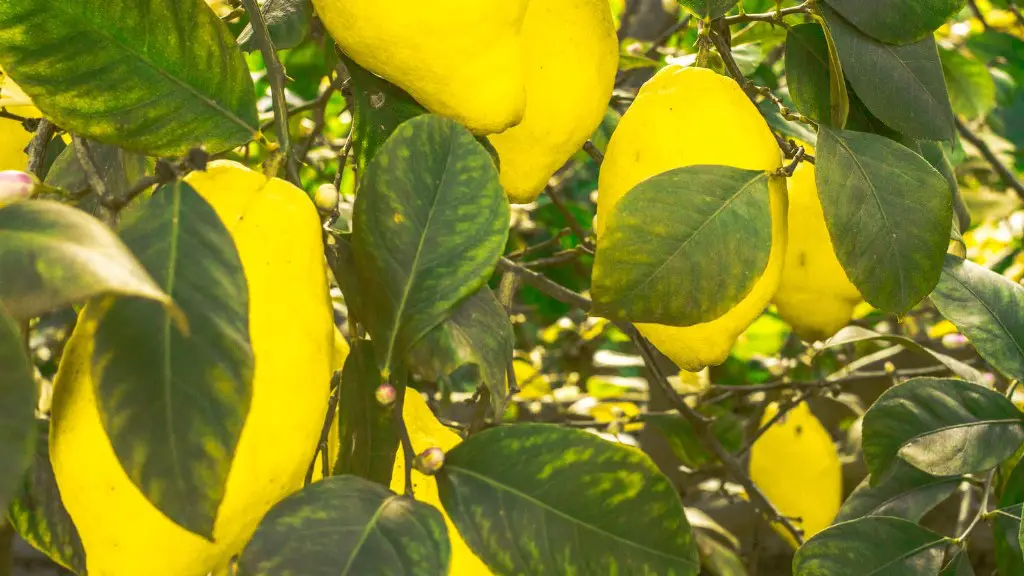Material Selection and Wrapping Process
In order to properly wrap a palm tree for cold weather, the right material must be selected. Using the correct materials is the most important factor in ensuring that your palm is adequately protected. Generally, a combination of breathable fabric, such as burlap or spun polyester, and an aerated plastic tarp is recommended.
When selecting the material, it is important to take into consideration the type of palm tree and the environment in which it is being planted. For example, a palm tree that is planted in an area with a lot of wind should be wrapped with a more breathable fabric. Additionally, the material should be non-abrasive, to avoid damaging the palm tree’s delicate fronds.
Once you have selected the material, the next step is to begin wrapping the palm tree. Begin by loosely wrapping the trunk of the tree with the breathable fabric, making sure to leave some space for air circulation. Continue the process by wrapping the middle of the tree, starting from the bottom and working your way up. Finally, wrap the top of the tree, covering the entire area except for the fronds.
Once the tree is wrapped, secure the material with tie downs or plastic straps. These are essential to ensure that the fabric stays in place, even during periods of high winds or heavy rains. It is also important to check the wrap periodically to ensure that no parts of the tree are exposed.
Caring for the Tree During Cold Weather
Once the palm tree has been securely wrapped, it is important to pay attention to the tree’s overall health during the cold weather season. In order for the tree to remain healthy throughout its winter hibernation, it is important to provide plenty of dehumidified air. This can be accomplished by running a fan or humidifier in the area where the tree is situated.
Additionally, it is important to ensure that the soil or potting mix around the tree is properly hydrated. During the cold weather season, it is recommended to water the tree at least once a week, as long as the condition of the soil is not too wet. If the soil is too wet, wait until it has had a chance to dry out before watering it again.
Finally, it is important to fertilize the soil around the palm tree on a regular basis. Doing so will help to keep the tree healthy and encourage growth during the warm seasons. The type of fertilizer needed will depend on the type of palm tree being grown, so be sure to consult with a nursery or expert for advice on which fertilizer to use.
Removal of Wrapping After Cold Weather
Once spring arrives, it is time to remove the wrapping from the palm tree. This should be done gradually, to allow the tree time to readjust to the change in temperatures. Begin by removing the plastic tarp and tie downs, and then gradually remove the breathable fabric. Do not remove the fabric all at once, or the tree may be subject to sunburn or other damage.
Once the fabric is removed, it is important to check the condition of the tree. If any parts of the tree are damaged or diseased, they should be removed as soon as possible. Additionally, it is important to check for any pests or animals in or around the tree and to treat any infestations that are discovered.
Finally, it is important to properly dispose of the material that was used to wrap the tree. If possible, the material should be reused for wrapping the tree again in the future. If the material is unusable, it should be disposed of in an eco-friendly way, such as bringing it to a local recycling center.
Soil Preparation for Planting Outside
If the palm tree is to be planted outdoors, it is important to properly prepare the soil beforehand. Begin by removing any weeds or debris from the area, then use a shovel or trowel to mix in a generous amount of organic compost. If available, a soil conditioner such as peat moss can also be added to the mix.
Once the soil is prepared, it is important to ensure that the tree is planted at the correct depth. Generally, it is recommended to dig a hole that is twice as deep and twice as wide as the root ball of the tree. This will allow the roots of the tree to spread out and access the necessary nutrients from the soil.
Finally, it is important to water the newly planted tree generously. Doing so will allow the roots of the tree to properly establish and grow strong. The tree should be watered at least twice a week during its first summer, in order to ensure that it stays healthy and lush.
Pruning and Trimming
Once the tree is planted and established, it is important to properly prune and trim the palm tree to maintain its overall health and beauty. Begin by removing any dead or damaged fronds or limbs from the tree, using a pair of pruning shears or clippers. Additionally, the tips of the leaves should be trimmed back to promote growth and keep the tree looking neat.
If the tree is to be planted outdoors, it is also important to regularly inspect it for pests or fungus. Treat any infestations promptly, to ensure that the tree remains healthy. Regular use of an insecticidal soap or fungicide can help to prevent any infestations from taking hold.
Finally, it is important to fertilize the tree on a regular basis. Doing so will help to ensure that the tree receives the necessary nutrients to stay healthy. Additionally, it will encourage the tree to continue to grow strong and vibrant.
Protection from Winter Winds
In areas where winter winds are strong and frequent, it is important to take extra measures to ensure that the palm tree remains healthy and protected. A windbreak can be extremely beneficial, as it will block the wind and reduce the amount of cold air that the tree is exposed to. A good windbreak can be made of fabric or tall shrubs or trees, as long as it is dense enough to be effective.
It is also important to protect the roots of the tree during winter winds. Mulch, compost, or even an actual windbreak can be used to protect the roots. This will help to keep the roots insulated and warm during periods of cold weather.
Finally, it is important to check to ensure that the wrap that was used to protect the tree is still in place and secure. If the wrap is damaged or torn, it should be replaced with a new wrap. Doing so can help to keep the tree healthy and thriving, even during periods of cold temperatures.
Consulting a Professional
If you are unsure about how to properly wrap or care for your palm tree for cold weather, it is best to consult with a professional. An experienced arborist or garden center can provide advice and assistance on the best way to protect your palm tree from the cold.
Additionally, a professional can provide advice on which soils and fertilizers to use and how to properly maintain the tree’s health during the winter months. They can also help with planning a windbreak or other protection for the palm tree.
Consulting with a professional is the best way to ensure that your palm tree stays healthy and vibrant throughout even the coldest winter months. The right support and care can help your palm tree not only survive, but thrive, year round.

